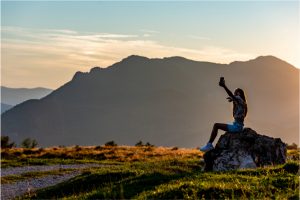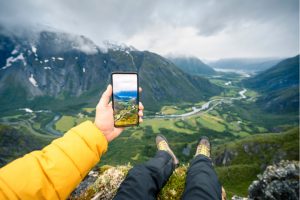Do you regularly upload photos to social media?
Do you often see nature photos posted by others on social media?
Do you usually upload or share nature photos to social media?
Do you often go out and take nature photographs?
It is no surprise to say that we are living in the golden age of social media, or at least the first of them, depending on what the future holds. Nor is it surprising to note that mobile phones are becoming less about the phones and more about the cameras of astonishing capacity and resolution; indeed, the advertising for these devices is increasingly focused on boasting about their photographic weaponry.
This combination has meant that this is also the golden age of the amateur photographer and, even more so, of the constant exposure to the world of images and recordings of all kinds and from all walks of life. This includes photographs of nature, flora and fauna taken by professional and amateur naturalists who enthusiastically share snapshots of their latest observations.

It is therefore logical that environmentalists and researchers should consider the possibility of drawing on this arsenal of visual information to monitor the state of the planet’s biodiversity. In fact, such citizen science initiatives have made a major contribution to monitoring and understanding the current state of biodiversity, particularly in the northern hemisphere. So much so that it is estimated that 80-90% of the records of observations of European flora and fauna are already the work of volunteers.
Researchers at the University of Queensland in Australia have recently conducted a pilot experiment in which they collected amateur photographs of birds and butterflies in the Bangladesh region taken by amateurs and uploaded to the social media site Facebook. The researchers’ aim is to expand their data and get a more realistic picture of which areas are home to the greatest diversity of endangered native species, in order to have the maximum information to advise the authorities on which areas should be prioritised when designating new protected reserves.

The result and the conclusions drawn could not have been more satisfactory, demonstrating that photographs uploaded to social media are an extremely valuable source of both quantitative and qualitative information, easily accessible and constantly updated, to complement and expand existing biodiversity registers in record time and allow more appropriate conservation plans to be drawn up. This is despite the limitations that have been identified, which are mainly due to the lack of specific tools—applications and computer programs—that allow the systematic monitoring and search of all the images uploaded to the various social media, as well as others that systematise the identification of the species present in each snapshot.
Even more important than the results of the study, however, is the reflection that those responsible for it invite us to engage in, and which opens this article: are or can photographs uploaded to social media be an effective means of raising environmental awareness in society?
To begin to explore this question, we suggest that you answer this simple questionnaire in two stages. The first three questions are for you to answer now, and the next three are for you to answer after 48 hours.
After reading this text, are you tempted to look for images of flora and fauna on social media?
And post pictures of nature on your social media profiles?
And have you thought about going out and taking pictures of nature and then uploading them to your social media accounts?
(48 hour break)

In the last two days have you checked/searched/looked at nature photos on social media?
And have you shared any images with “naturalistic” connotations (a selfie with a natural landscape in the background, a photo of an animal in its habitat, etc.)?
And have you gone out to photograph nature with the thought of sharing your snapshots later?
Comments on this publication